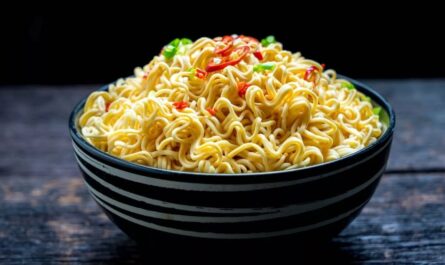With the growing concerns around food safety and hygiene, the demand for food safety products and testing has increased exponentially in recent years. Various regulatory bodies have made it mandatory for food producers and handlers to strictly follow food safety protocols and get regular tests done to ensure the quality and safety of food. This has opened up a huge for food safety products, equipment and testing services.
Food Contact Materials Testing
All materials that come in contact with food such as packaging, utensils, containers etc. need to be thoroughly tested before being used for food applications. These materials are tested for chemical leaching, microbial growth, temperature resistance and other parameters to check if they are food grade and safe for use. Regular testing and certification of these food contact materials help food businesses comply with food safety standards. Some of the key tests done on Food Safety Products And Testing contact materials include:
– Heavy Metal Testing: Tests are done to check for the presence of heavy metals like lead, cadmium, mercury, arsenic etc. which can leach into food from packaging materials.
– Migration Testing: This test is done to check the migration levels of chemicals from packaging into food under heat, acidity, humidity conditions over time.
– Microbial Testing: Tests are conducted to check if the materials support microbial growth. Aerobic plate count, yeast and mold count tests are commonly done.
– Temperature Resistance Testing: Materials are tested for their ability to withstand various temperatures like hot fill, retort without warping, cracking or chemical decomposition.
Many global accredited labs offer a wide range of food contact material testing services to certify products as per FDA, EU and other global food safety standards. This allows manufacturers to label their products as food grade.
Microbiological Testing
Regular microbiological testing of raw materials, products, environmental samples from production areas, and processing equipment is an essential part of any food safety program. Some of the key microbiological tests include:
– Total Plate Count: Determines the number of viable bacteria or microbes present in a sample which indicates the general hygienic condition.
– Yeast and Mold Count: Checks for the presence of fungi in products. High counts can spoil foods.
– Coliform and E.coli Testing: Detects the presence of indicator bacteria pointing to fecal contamination which can cause diseases.
– Salmonella Testing: Checks for the presence of the pathogenic Salmonella bacteria commonly associated with foodborne illnesses.
– Listeria Testing: Detects Listeria monocytogenes, a dangerous bacterium that thrives in moist, chilled environments and causes severe food poisoning.
-pathogen/toxins testing.
Many accredited food testing labs offer microbiological testing services adhering to global analytical methods and standards. Regular testing ensures food production processes meet the required safety criteria.
Chemical and Allergen Testing
As well as microbiological contaminants, foods can also contain illegal residues of veterinary drugs, heavy metals, pesticides or undeclared allergens which is why their regular chemical and allergen testing is necessary. Some of the key tests done are:
– Pesticide Residue Testing: Determines the presence of excessive pesticide residues from crop protection practices.
– Antibiotic and Growth Hormone residue testing: Especially important for meat and dairy products to ensure consumer safety.
– Heavy Metal Testing: Screens for unsafe levels of heavy metals like lead, cadmium, mercury, arsenic in foods.
– Allergen Testing: Checks for accidental presence of top food allergens like milk, eggs, fish, tree nuts, wheat, soy, etc. which can cause life-threatening reactions.
– GMO Testing: Tests for genetically modified organisms in products claimed to be non-GMO or organic.
– Nutritional Analysis: Determines macro and micronutrients composition, calories, sugars, sodium levels etc. for labeling compliance.
Reliable chemical and allergen testing aids in maintaining stringent food quality and safety benchmarks. It prevents adulteration incidents and protects consumer health.
Food Packaging Testing
With increasing food scares related to packaging materials, food package testing has become a much-needed service. Key packaging related tests undertaken are:
– Shelf-Life Testing: Helps determine the length of time food products can be stored while retaining their quality attributes. Factors like pH value, water activity, packaging permeability are monitored over storage.
– Package Integrity Testing: Ensures packages or containers withstand distribution hazards without leaks or ruptures by drop tests, impact tests, vibration tests.
– Oxygen Transmission Rate Testing: Determines oxygen permeability levels of packaging films which affects the respiration rate and shelf-life of products.
– Grease Resistance Testing: Checks grease barrier properties of food packaging for products like snacks.
– Heat Resistance Testing: Simulates thermal processes like pasteurization, cooking, retort sterilization to see if packages withstand high temperatures.
Regular packaging evaluation through standardized lab tests gives reliable data for package optimization, distribution, and claim substantiation. It guarantees packaging suitability and product protection.
Sampling and Inspection
Proper food sampling techniques play an important role in obtaining representative test samples. Common sampling methods include:
– Statistical sampling – Random sampling from batches based on statistical principles for microbial and chemical residue analysis.
– Composite sampling – Combining multiple subsamples to form one final sample. Done to reduce analytical costs.
– Swab sampling – Used to collect environmental or surface samples using sterile swabs and transport media.
– Destructive sampling – Involves direct collection from packages affecting their usability for some tests.
Inspection of facilities, production lines, raw material receipts, finished product dispatch is done against checklists to identify lapses. Digital tools now enable remote auditing as well. Periodic supplier audits ensure compliant ingredients. Regulatory validated sampling protocols safeguard test result credibility.
*Note:
1. Source: Coherent Market Insights, Public sources, Desk research
2. We have leveraged AI tools to mine information and compile it



